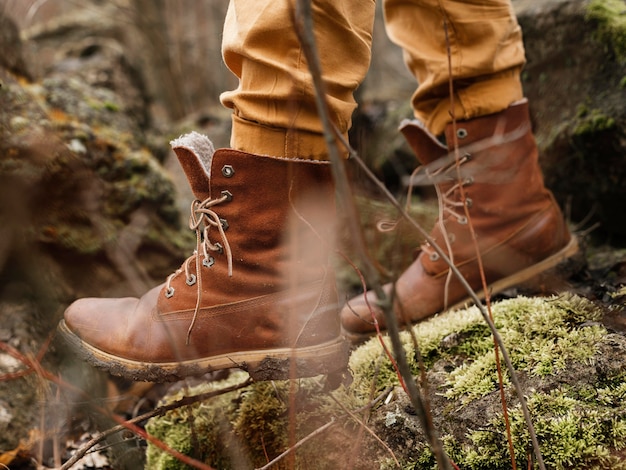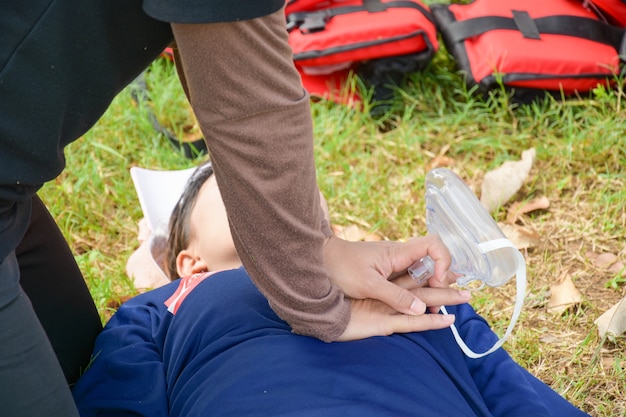Mountain hiking is an amazing approach to challenge yourself and get in touch with the surroundings. Nature presents amazing vistas and a sense of accomplishment. However, trekking requires some planning and expertise; it is not only about walking. Safely navigating mountain trails is vital.
This guide will teach you the crucial fundamentals of mountain hiking and equip you to be a competent navigator. You will study safety precautions, map reading, and necessary tools. Whether you trek regularly or just now, these ideas will improve your hiking experiences. Accept the wild and start to boldly explore.
Essential Equipment for Hiking Mountains
Footwear

Appropriate shoes are the basis of a good hike. Select reliable, cozy hiking boots. They ought to have a firm grip and support ankles. Before long climbs, test your boots to prevent blisters. Ensure they are waterproof or water-resistant; blisters and pain can result from wet feet.
Clothing
Mountain trekking depends on a layered approach. Stay dry by wearing base layers designed for moisture-wicking. Layer insulating materials for warmth and a waterproof jacket to guard against rain. In cooler months, don’t overlook a hat and gloves. If your feet get wet, pack an extra pair of socks. Always have a hat and sunglasses to shield against the strong solar rays.
Packed Bag

You absolutely need a well-fitting backpack. Its hip belt and cushioned straps should help balance weight. Get a size appropriate for the length of your hike. There should be enough pockets for simple gear access. Stow basics include additional clothes, a first aid kit, and emergency supplies. Check that the rain cover on your backpack keeps your stuff dry.
Navigating Instruments
Always carry a map and compass. Learn how to use them even if you carry a GPS gadget. Though a compass and map won’t fail you, batteries can die. A decent map should depict thorough topography and cover the area you are trekking in. To examine minute features on the map, consider carrying a magnifying glass.
Food and Water

Bring extra water to stay hydrated. A hydration bladder makes it easy to access. Store high-energy munchies, such as energy bars, dried fruit, and almonds. On longer walks, think about light lunches. Plan your water sources along the trail since hydration is absolutely vital. To guarantee you have safe, drinkable water, pack portable water filters or purification pills.
Extra Tools
Particularly if you intend to trek early in the morning or late in the evening, never overlook the need to carry a headlamp or flashlight. In some circumstances, a multi-tool can be quite useful. Trekking poles help to lessen knee strain and offer additional stability. For unplanned circumstances, pack a tiny, light emergency shelter and fire-starting gear.
Navigating and Understanding Maps and Directions

Reading topographic maps
Topographic maps highlight landforms and elevation variations. To grasp the topography, learn to recognize contour marks. Closer lines denote steeper sections. Name paths, rivers, and mountains. Take note of the legend to grasp the employed symbols. Furthermore, knowledge of scale is crucial; it facilitates precise distance estimation.
Drawing on a Compass

One finds direction with a compass. Know how to follow a bearing and set one. Before depending on it in the wild, practice in known territory. Crucially, one must understand declination, which separates magnetic north from true north. Regular practice will enable you to confidently use a compass on foreign ground.
GPS Instruments
Although useful, GPS gadgets shouldn’t take the place of conventional instruments. Track your path with them and note waypoints. If the gadget fails, always have a backup plan. Turn off extraneous functions to help to extend battery life. Before hiking, familiarize yourself with the device’s features to prevent issues.
Route Organization

Chart your course before you leave. Review the map and highlight significant locations. Review the weather prediction and, when necessary, change your plans. Tell someone your projected return and path. Add different paths in case of unanticipated developments. Plan considering your physical condition and the difficulty level of the trail.
Wayfinding Methodologies
Learn basic navigating methods, such as following natural landmarks, such as valleys, rivers, and ridges. These will guide you if you lose the trail. When required, find direction using the sun and stars. Regularly applying these methods will increase your confidence and navigational ability.
Advice on Safety for Mountain Hiking

Consciousness of Weather
Mountain meteorology is erratic and fast. See the projection before you go. Choose layers and pack rain gear. Should things get worse, be ready to turn back. Knowing the patterns of the weather will enable you to predict changes. Recognize the signals of approaching storms, such as a darkened sky and abrupt temperature changes.
Initial Aid Kit

Own a basic first aid kit. Add bandages, antiseptic wipes, analgesics, and blister therapy. Know how to apply every tool. To prepare for an emergency, consider enrolling in a wilderness first aid course.
Wildlife Protection
Learn about the local animals and safe interaction techniques. Make noise to evade surprising animals. Stow food carefully to prevent drawing them. If you hike in a bear habitat, carry bear spray and know how to use it. Discover how to spot animal trails and indicators to be alert of their existence.
Emergency Measures

Know your actions in an emergency. Carry a whistle to call for aid. Learn fundamental survival techniques, including water searching and fire building. For much more protection, carry a personal locator beacon (PLB). Learn about the emergency signals rescue teams employ.
Improving Navigation Ability
Perfect Practice Makes Sense
Get regular practice with your navigation. Use maps and compasses on familiar grounds. Challenge yourself progressively across increasingly challenging terrain. Consistent practice develops expertise and confidence. Try night walks to practice low-light navigation.
A Hiking Group

Hiking with a group will improve your abilities. Practice together and learn from more seasoned hikers. Group walks also offer safety. Advice and knowledge shared with others can be quite beneficial. Look for clubs that provide training courses and concentrate on developing particular skills.
Attend Navigation Classes
You can look at a navigation course. Numerous outdoor groups provide courses. These classes give professional direction and practical experience. Learning from experts will hasten your improvement in skill. Many times, courses incorporate hands-on activities modeled by real-world situations.
Virtual Navigating Practice

Work on navigation using internet tools and applications. Virtual map reading and trip planning activities abound on many websites. From the convenience of your house, they can be a terrific approach to hone your abilities.
The End Note
One of the exciting and fulfilling hobbies is mountain hiking. With enough knowledge and preparedness, you can boldly explore the wild. Don’t forget to follow safety precautions, grasp navigation instruments, and dress yourself correctly. Frequent practice helps you to develop into a master navigator. Accept the difficulties and splendor of mountain walking. Have fun on the courses, and stay safe.
Hiking mountains can help you increase your confidence and change your relationship with nature. If you have mastered fundamental abilities, you will easily navigate the woods.




GIPHY App Key not set. Please check settings